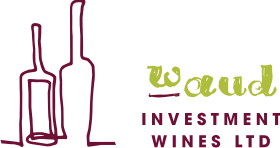
Château Cheval Blanc
Vines have been cultivated on the Cheval Blanc site for several centuries, and the Saint-Emilion vineyards have been creating wines of exceptional quality, one of the most acclaimed and sought-after in the world, since late antiquity. Château Cheval Blanc is the legendary spearhead of this tradition.
The history of the estate:
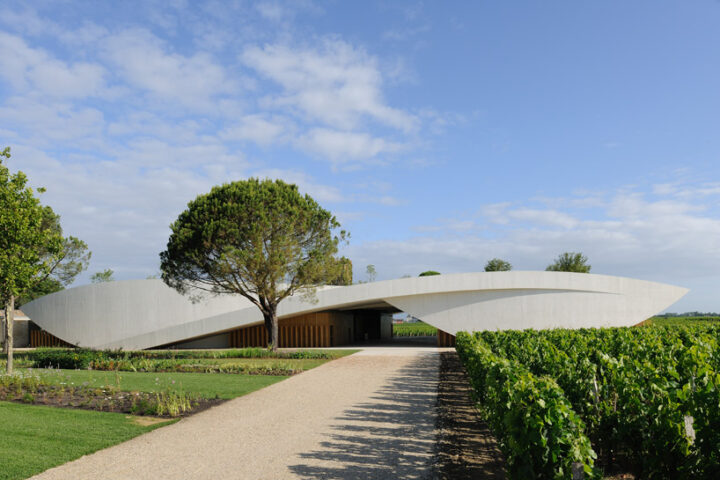 As far back as the 15th century, ancient texts bear witness to the existence of vines cultivated at Cheval Blanc. Archives dating from 1546 reveal that the owner of the land leased the vines. The prestigious career of Cheval Blanc began in 1832 with the purchase of the heart of the estate by Jean-Jacques Ducasse, president of the Libourne court. Over the next twenty years, successive purchases of plots from Château Figeac led to the creation of the Cheval Blanc estate, whose 39-hectare parcel has remained virtually unchanged ever since.
As far back as the 15th century, ancient texts bear witness to the existence of vines cultivated at Cheval Blanc. Archives dating from 1546 reveal that the owner of the land leased the vines. The prestigious career of Cheval Blanc began in 1832 with the purchase of the heart of the estate by Jean-Jacques Ducasse, president of the Libourne court. Over the next twenty years, successive purchases of plots from Château Figeac led to the creation of the Cheval Blanc estate, whose 39-hectare parcel has remained virtually unchanged ever since.
The union of Henriette Ducasse, the owner’s daughter, with Jean Laussac-Fourcaud, a wine merchant from Libourne, marked a new turning point in the destiny of Cheval Blanc and defined the unique identity of this cru. When Henriette took over Cheval Blanc, her husband undertook a spectacular modernisation of the estate, being the first to understand the importance of water constraints in producing the finest wines.
In the mid-1860s, Jean Laussac-Fourcaud replanted part of the estate and opted for a singular grape variety, half Merlot, the king grape of the Right Bank, and half Cabernet Franc. A totally atypical choice. Finally, in 1852, the former ‘vin de Figeac’ was marketed for the first time under the name Cheval Blanc. It was then that its prestigious career began.
 In 1862, Cheval Blanc won its first medal at the Universal Exhibition in London. And in 1878, the Château won its first gold medal at the Paris Universal Exhibition. These bronze medals still adorn the Cheval Blanc labels. The 1880s saw Cheval Blanc’s greatest dreams come true. It rubbed shoulders with Margaux, Latour, Lafite and Haut-Brion at auctions in Paris and London.
In 1862, Cheval Blanc won its first medal at the Universal Exhibition in London. And in 1878, the Château won its first gold medal at the Paris Universal Exhibition. These bronze medals still adorn the Cheval Blanc labels. The 1880s saw Cheval Blanc’s greatest dreams come true. It rubbed shoulders with Margaux, Latour, Lafite and Haut-Brion at auctions in Paris and London.
When Jean Laussac-Fourcaud died in 1888, his widow inherited the estate, bequeathing it to her son Albert. Jacques and Joseph, sons of Albert Fourcaud-Laussac, continued the policy of excellence implemented by their father and grandfather. In 1954, when the wines of Saint-Emilion were first classified, Cheval Blanc was awarded the supreme distinction of being classified as a Premier Grand Cru Classé ‘A’. This distinction has been confirmed every decade since: excellence is maintained from one classification to the next. Cheval Blanc joins the prestigious and coveted ‘Club des 9’, which brings together the best of the best in Bordeaux.
In 1998, two long-standing friends and lovers of fine wines joined forces to acquire this jewel of Saint-Emilion: Bernard Arnault and Baron Albert Frère became the owners of the prestigious château and breathed new life into it, while respecting its history. Since June 2011, the winery designed by Christian de Portzamparc has stood as an extension to the château. The building is set in a historic landscape that is a UNESCO World Heritage Site.
The terroir:
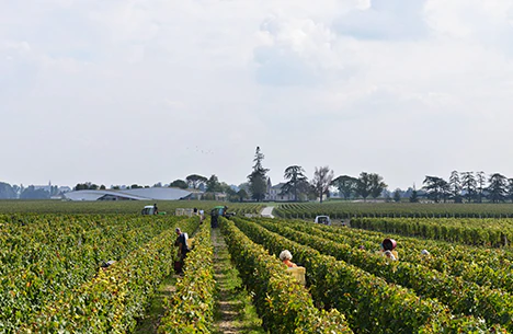 Located in the commune of Saint-Emilion, but bordering on Pomerol, the estate covers 39 hectares divided into forty-five parcels, each of which is a small vineyard with its own unique identity. Three major soil types coexist here, forming a veritable mosaic. A singular terroir, composed essentially of coarse clay and gravel on some plots, finer and sandier on others. Some properties in Saint-Emilion have excellent gravelly soils; others, in Saint-Emilion or Pomerol, have very good clay soils. It is a pure coincidence of history that at Cheval Blanc, these two types of soil coexist in roughly equal proportions.
Located in the commune of Saint-Emilion, but bordering on Pomerol, the estate covers 39 hectares divided into forty-five parcels, each of which is a small vineyard with its own unique identity. Three major soil types coexist here, forming a veritable mosaic. A singular terroir, composed essentially of coarse clay and gravel on some plots, finer and sandier on others. Some properties in Saint-Emilion have excellent gravelly soils; others, in Saint-Emilion or Pomerol, have very good clay soils. It is a pure coincidence of history that at Cheval Blanc, these two types of soil coexist in roughly equal proportions.
This natural richness is complemented by an original grape variety, made up of 52% Cabernet Franc, 43% Merlot and 5% Cabernet Sauvignon. As a result, each parcel has its own distinctive characteristics, linked to its age, size, soil type and grape variety. As a result, the wines produced on each parcel have their own character.
The Wine:
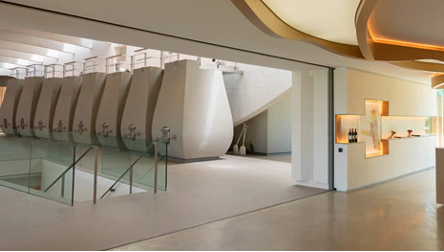 The tanks are filled by gravity, without pumping. At the end of autumn, once the vinification process is complete, the wine spends between sixteen and eighteen months in the cellar basement, where the long rows of barrels are kept at a constant temperature of 14°. Each vintage is aged in 300 to 450 barrels. The aim is to create the finest Cheval Blanc, respecting both the unique personality of the vintage and the Cheval Blanc style: freshness, elegance, finesse, length and balance.
The tanks are filled by gravity, without pumping. At the end of autumn, once the vinification process is complete, the wine spends between sixteen and eighteen months in the cellar basement, where the long rows of barrels are kept at a constant temperature of 14°. Each vintage is aged in 300 to 450 barrels. The aim is to create the finest Cheval Blanc, respecting both the unique personality of the vintage and the Cheval Blanc style: freshness, elegance, finesse, length and balance.
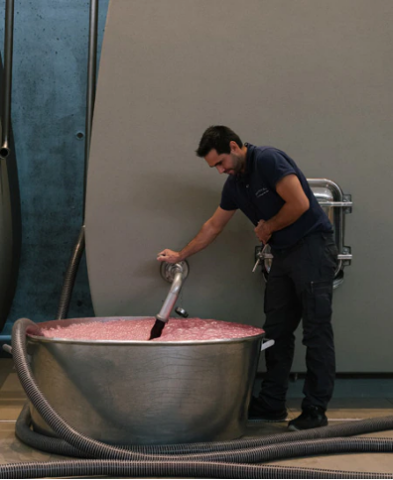
The wine is the result of all this work. It give very powerful wines, with velvety, smooth tannins thanks to the clays, aromatic and fine thanks to the gravels. The result is a blend of wines that are both powerful and elegant, with the most complex aromatic expression characteristic of great wines.
